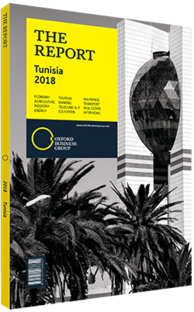On the cards: Electronic payments and digitalisation are key measures to grow the banked population
While the number of debit cards and credit cards in circulation has increased in recent years, obstacles to electronic payments remain, particularly in Tunisia’s in-land governorates, which suffer from limited banking services. Other factors, such as a cultural bias against banks and electronic payments, contribute to relatively low banking penetration across the country. Part of the solution to bring more citizens into the fold of the financial sector could lie in digital banking services.
PLASTIC MONEY: According to the most recent annual report by the Banque Centrale de Tunisie (BCT), the number of debit cards increased by 41% between 2012 and 2016, to 3.2m out of a population of 11.4m. Electronic payment transactions grew by 54.5% in the same period, from TD5.5bn (€2.1bn) to TD8.5bn (€3.3bn). Electronic payment firms have stressed the benefits, such as limiting uncontrolled cash circulation and protecting consumers by securing transactions. However, the range of applications for e-transactions remains limited; the BCT reported that 87% concerned withdrawal from a bank counter or ATM in 2016, while only 13% were payments made through electronic terminals.
Mohamed Taha Allani, director of operations at Taysir Microfinance, told OBG that the number of electronic payment transactions is weak because of cultural bias and the size of the informal economy, which encourages cash rather than cards for payments. “The number of cards in circulation has increased due to a rise in the packages offered by banks, which provide any account holder with a card,” he said. “Cardholders, however, haven’t been using them.” Yet, it is not just the informal economy that is encouraging the continued use of cash. “There is a lack of incentives to encourage digital payment methods and reduce the amount of paper currency people hold. In fact, the government requires people to pay in cash for many services,” Rachid Ben Abdelkader, CEO of InterBank Services, told OBG.
Poor infrastructure, including weak connectivity of electronic payment terminals across a variety of businesses, is exacerbating the issue. “Digitalisation of the microfinance segment would eliminate various costs for both lenders and borrowers, but the BCT has many roadblocks in this regard. The Tunisian Post accounts for the majority of electronic payments, so this mechanism should be liberalised,” Rim Lamti, director-general of Taysir Microfinance, told OBG.
REGIONAL DISPARITIES: The presence and quality of infrastructure also vary across Tunisia’s governorates. Coastal areas accounted for 87% of the banking network in 2016, with 41% in Greater Tunis alone, according to the BCT. “Historical and economic factors have led banks to establish themselves on the coast rather than in in-land governorates, and this is unlikely to change in the short term. Banks are attracted by economic activity, which remains weak in the inner areas of the country,” Malek Bakir, business analyst at the European Investment Bank, told OBG.
In addition, according to Zouhair Ouakaa, director general of Banque Tuniso-Libyenne, there tends to be a sense of mistrust towards financial institutions, particularly in rural areas, and as a result the population tends to resort to cash rather than banking services for transaction settlement. He further explained that bank card usage is very weak in inner cities of Tunisia due to the locally fragmented banking network.
DIGITALISATION: One solution to limited banking infrastructure in certain parts of the country is digital banking. This is possible given banks’ improved information systems, which allows for the development of products such as mobile banking and internet banking. The digitalisation of administrative processes also enables banks to reduce the cost of establishing branches in areas with reduced economic activity, according to Salem Bessaoud, director of Valoris Consulting. In addition, the most recent banking law, instituted in July 2016, has allowed for the entry of new actors such as payment operators into the market. These services are likely to help develop access for the unbanked population.
You have reached the limit of premium articles you can view for free.
Choose from the options below to purchase print or digital editions of our Reports. You can also purchase a website subscription giving you unlimited access to all of our Reports online for 12 months.
If you have already purchased this Report or have a website subscription, please login to continue.

